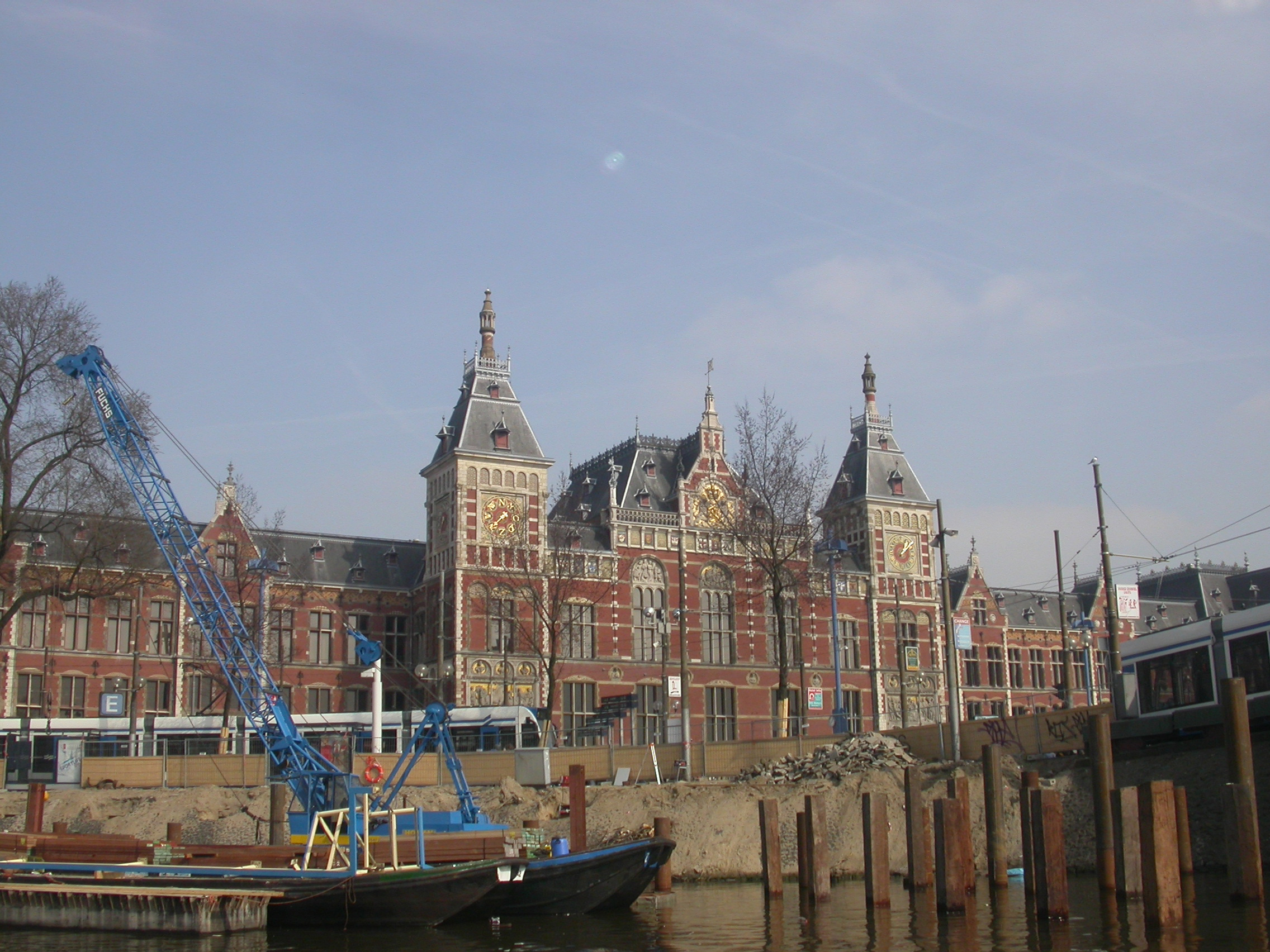
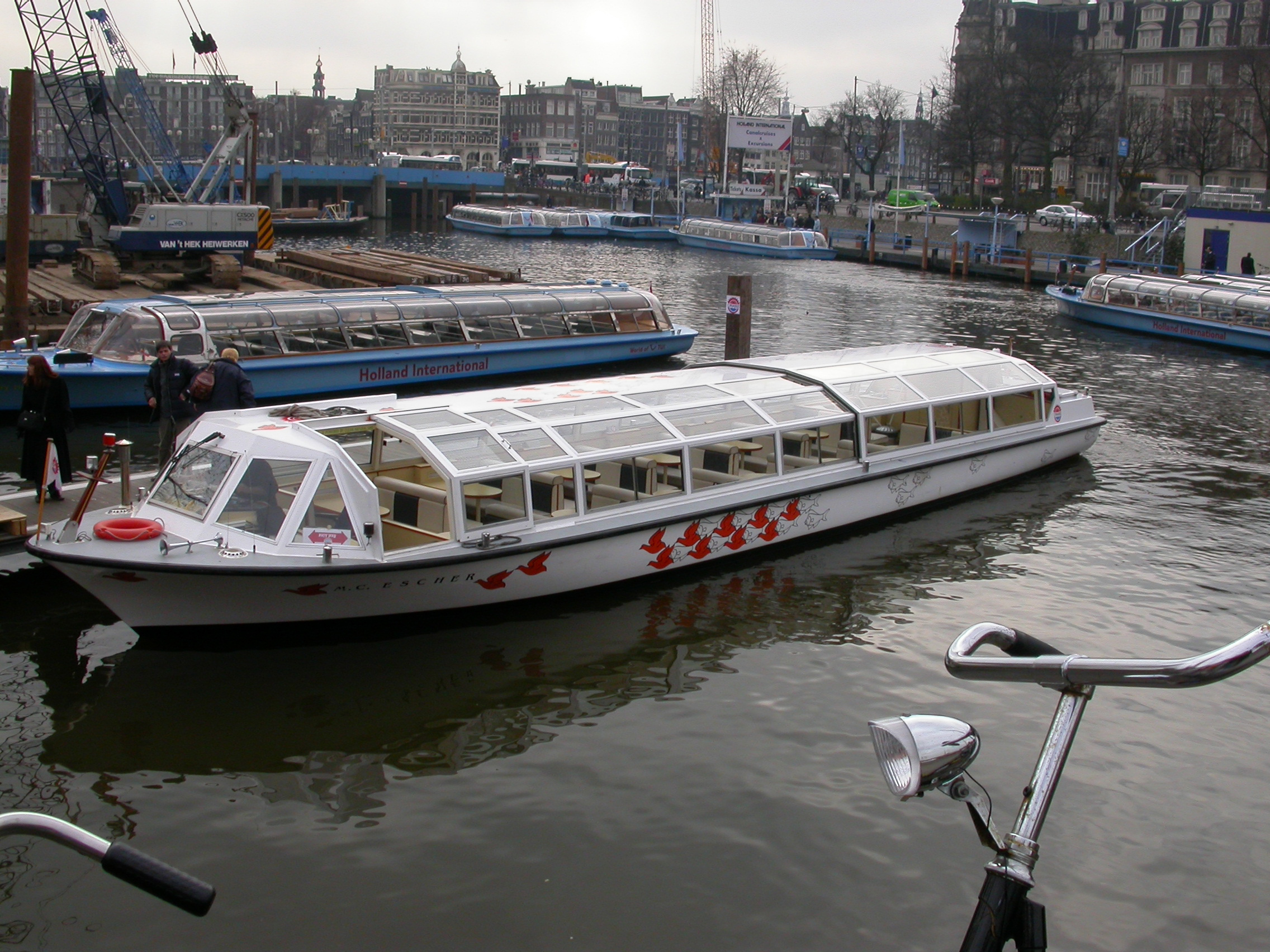
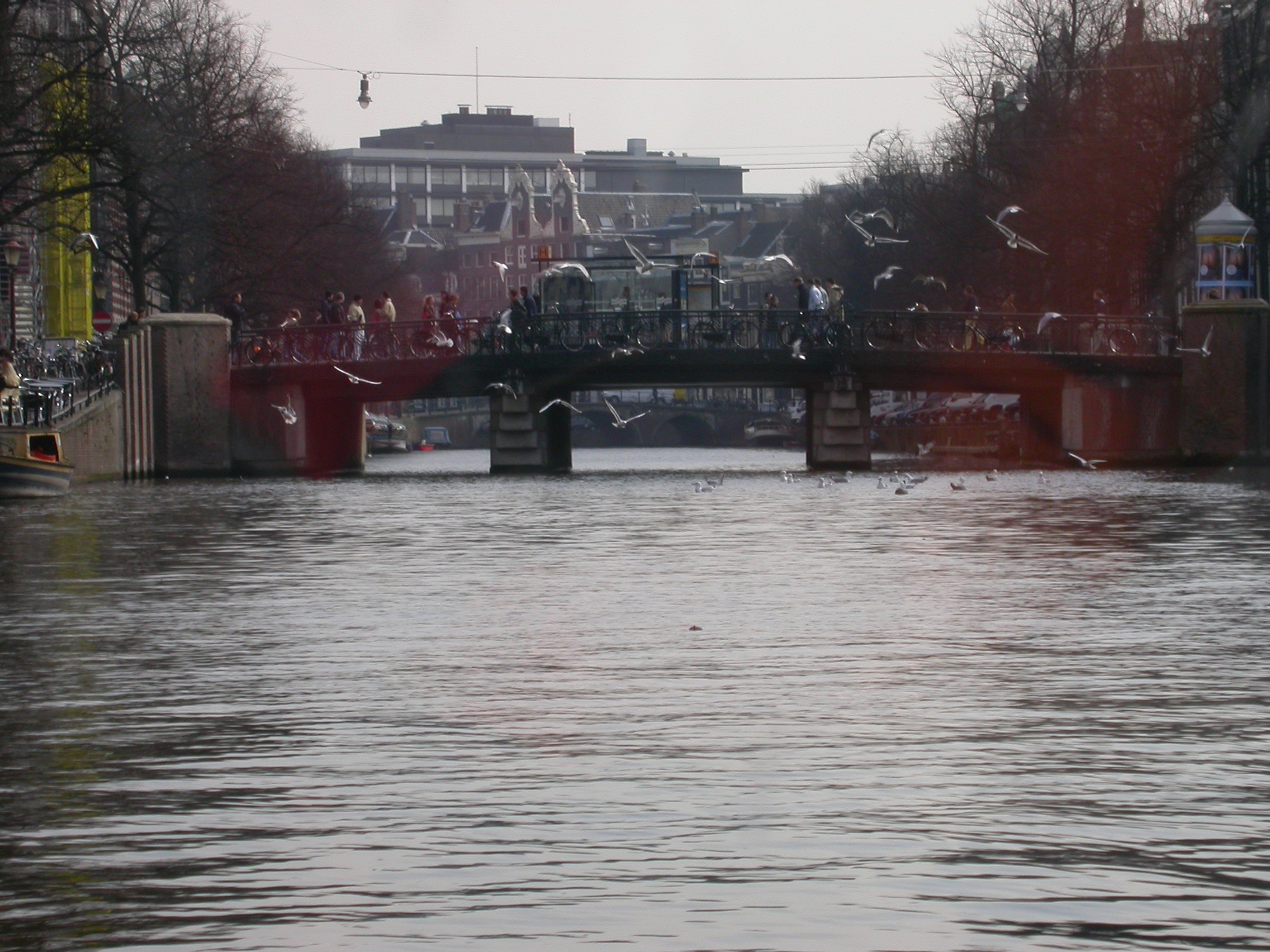
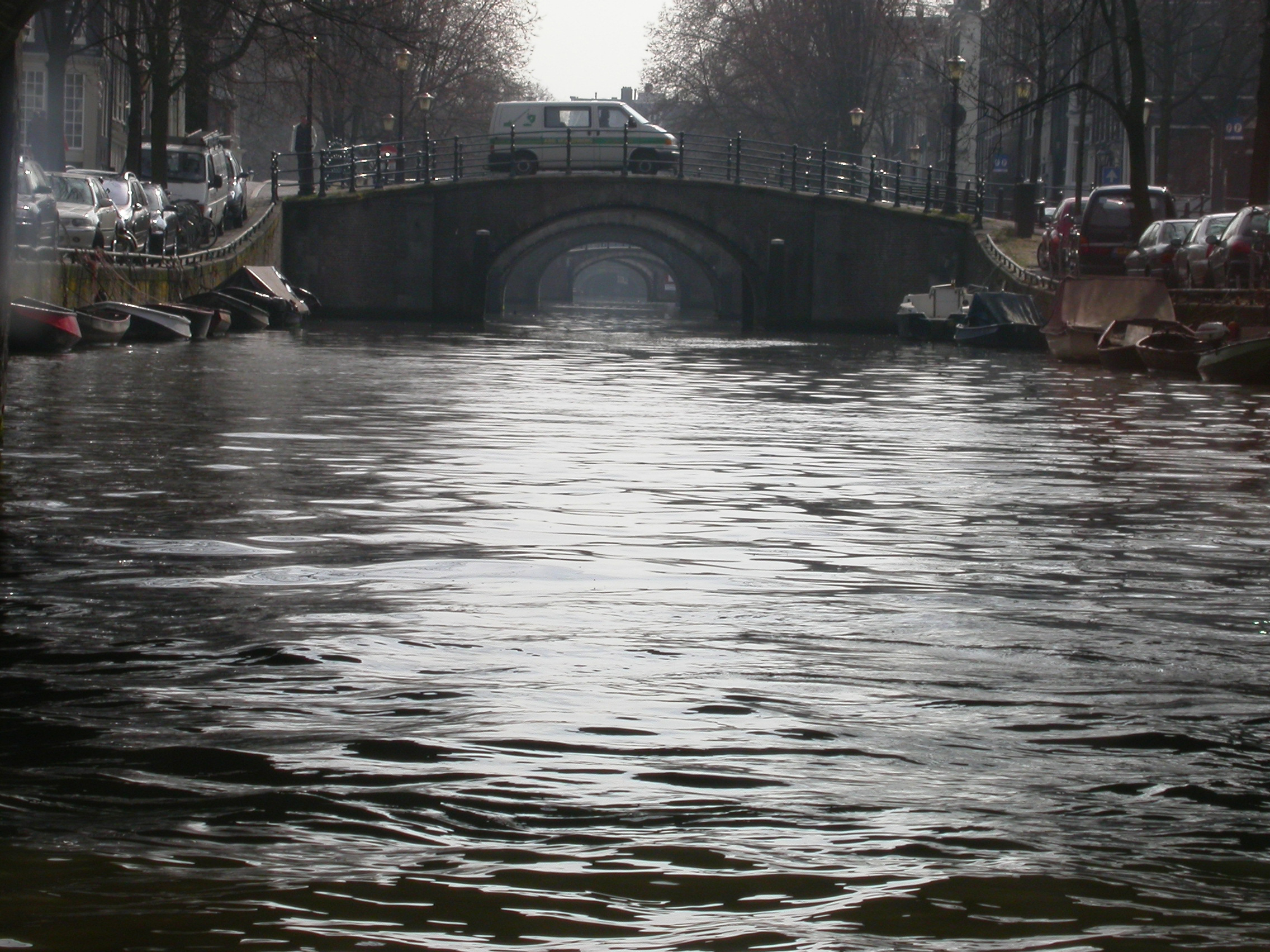
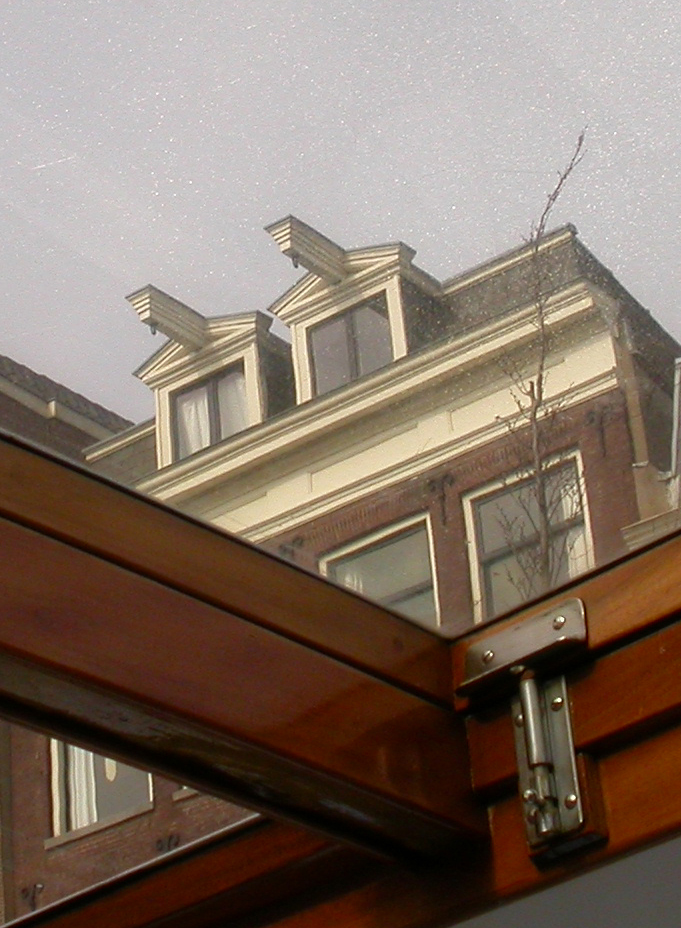
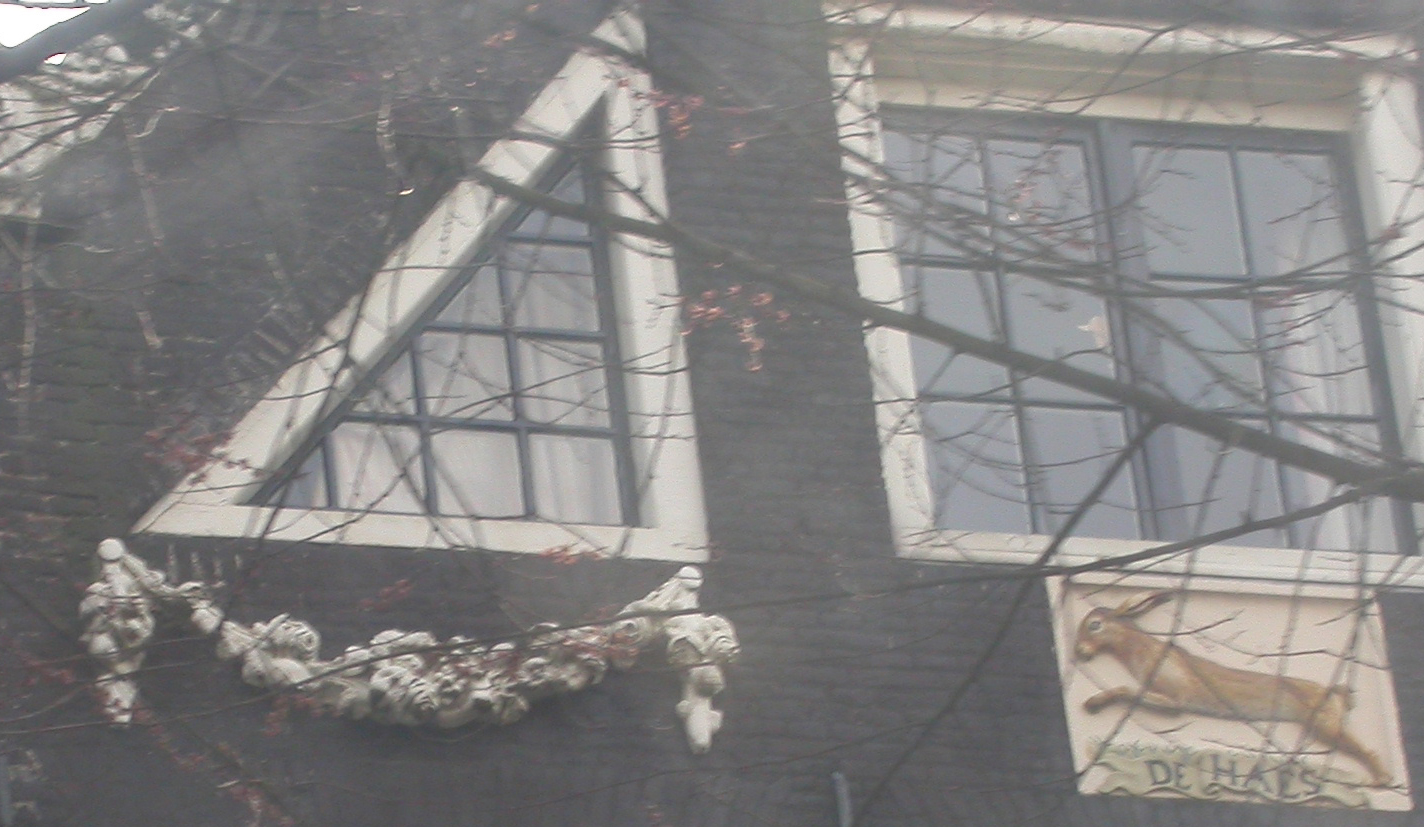
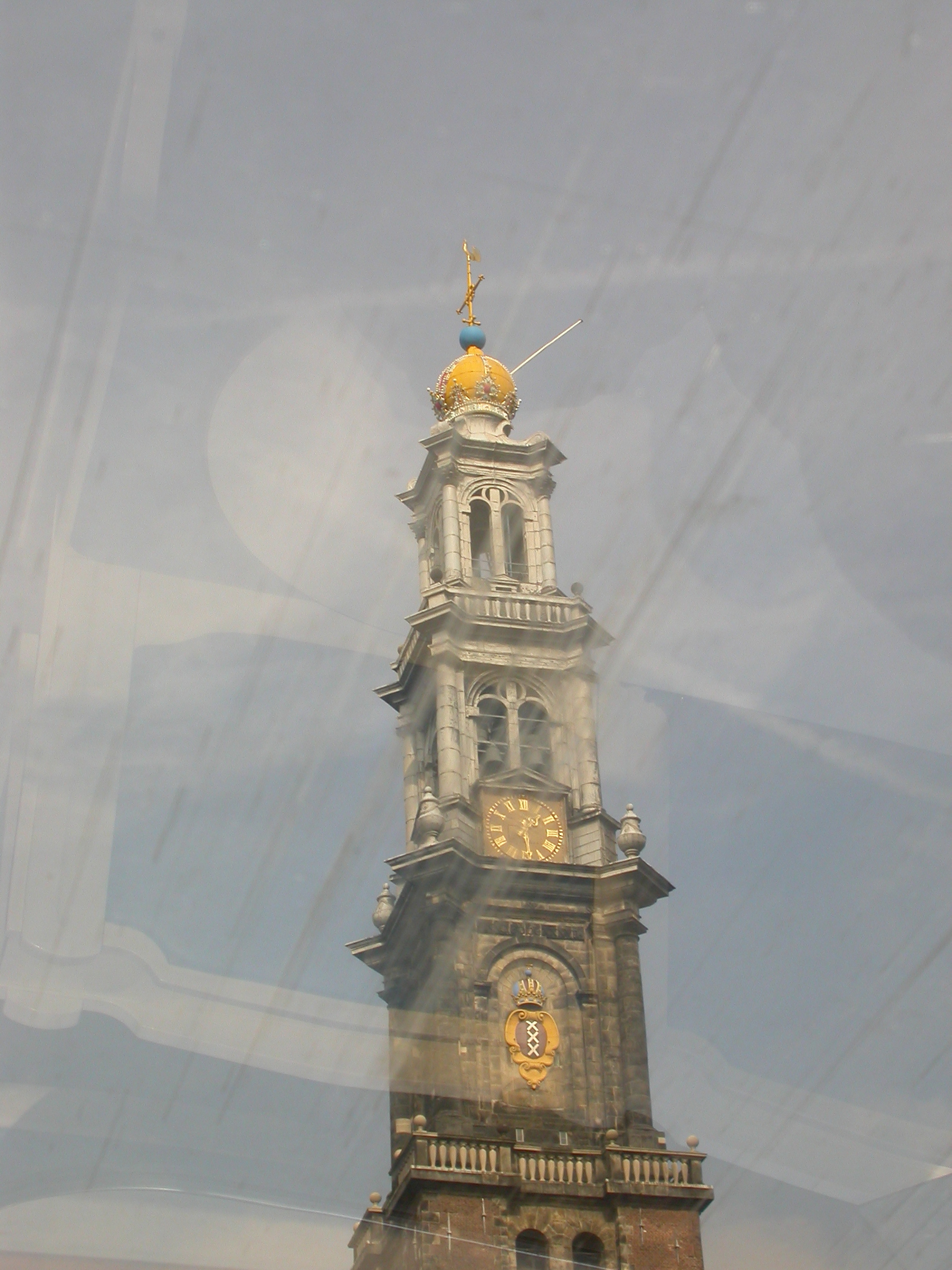

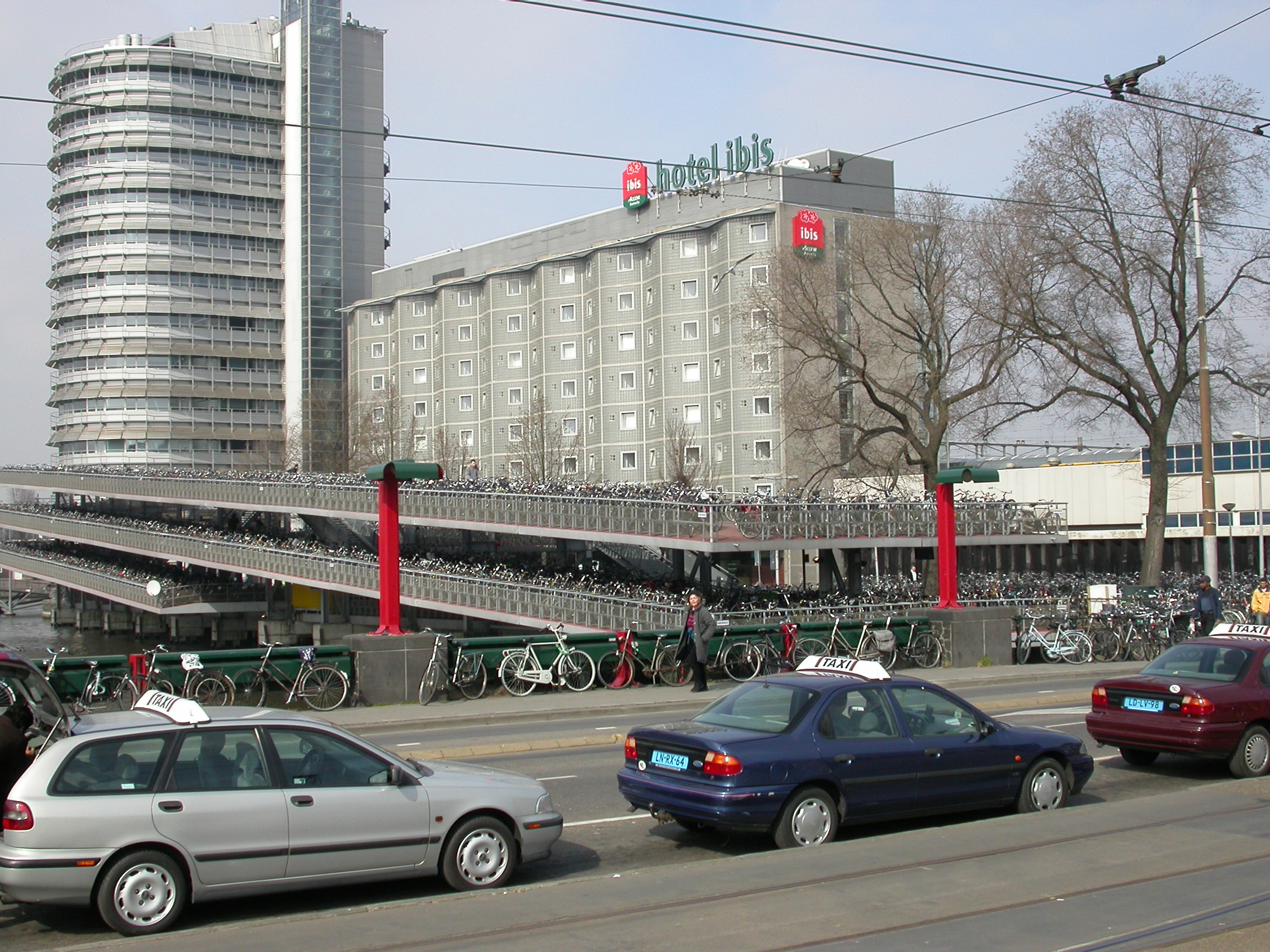
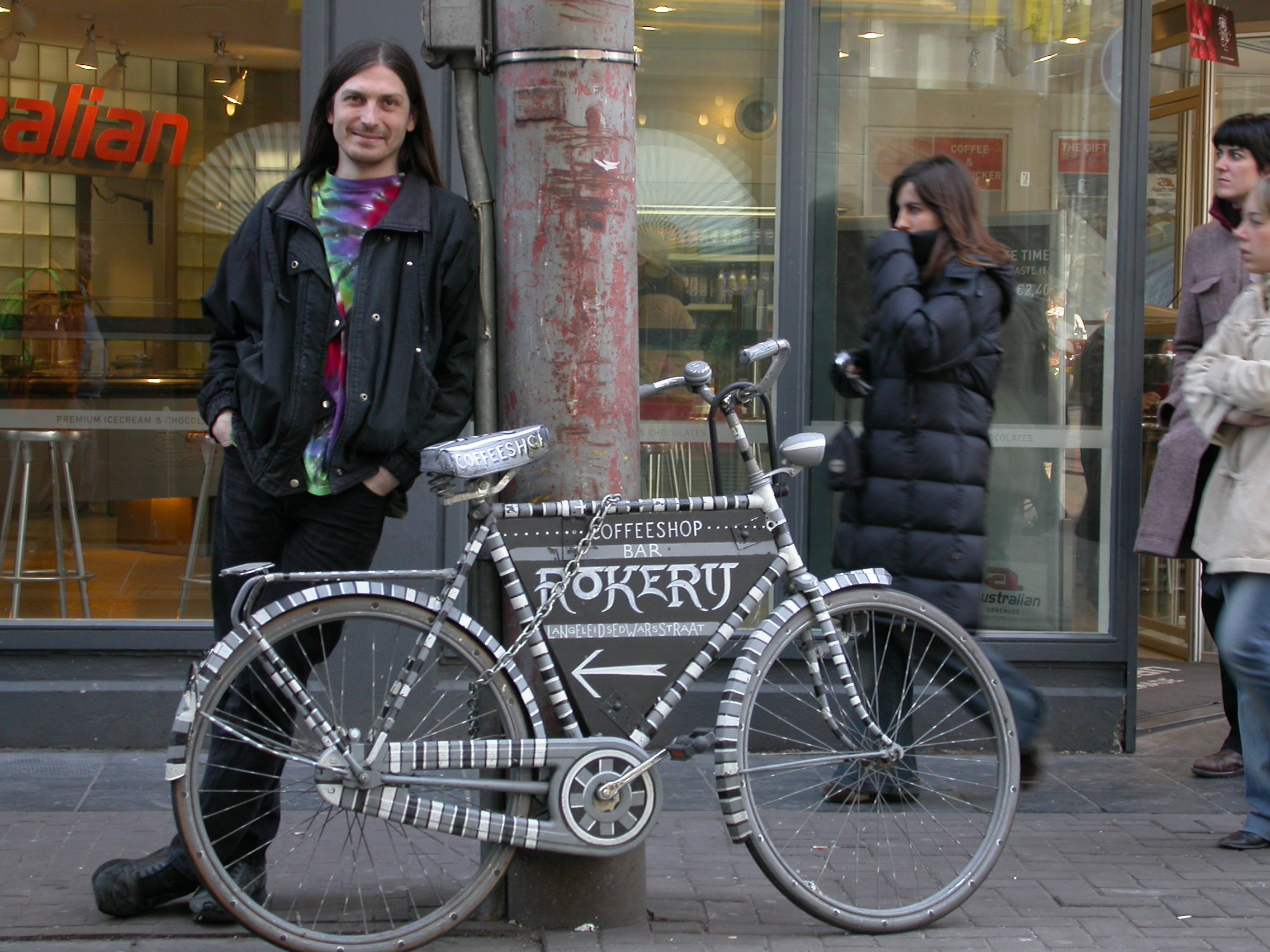
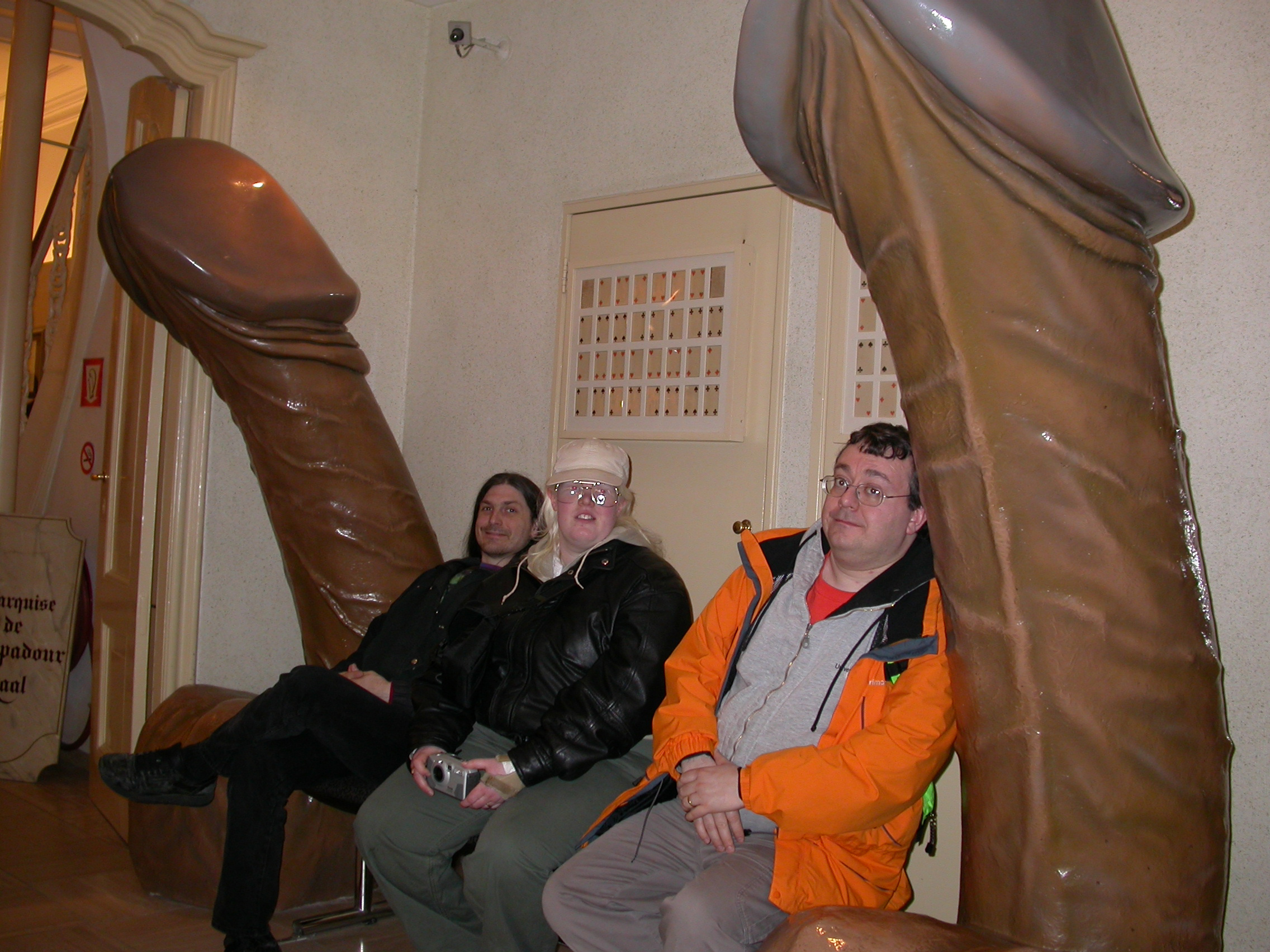
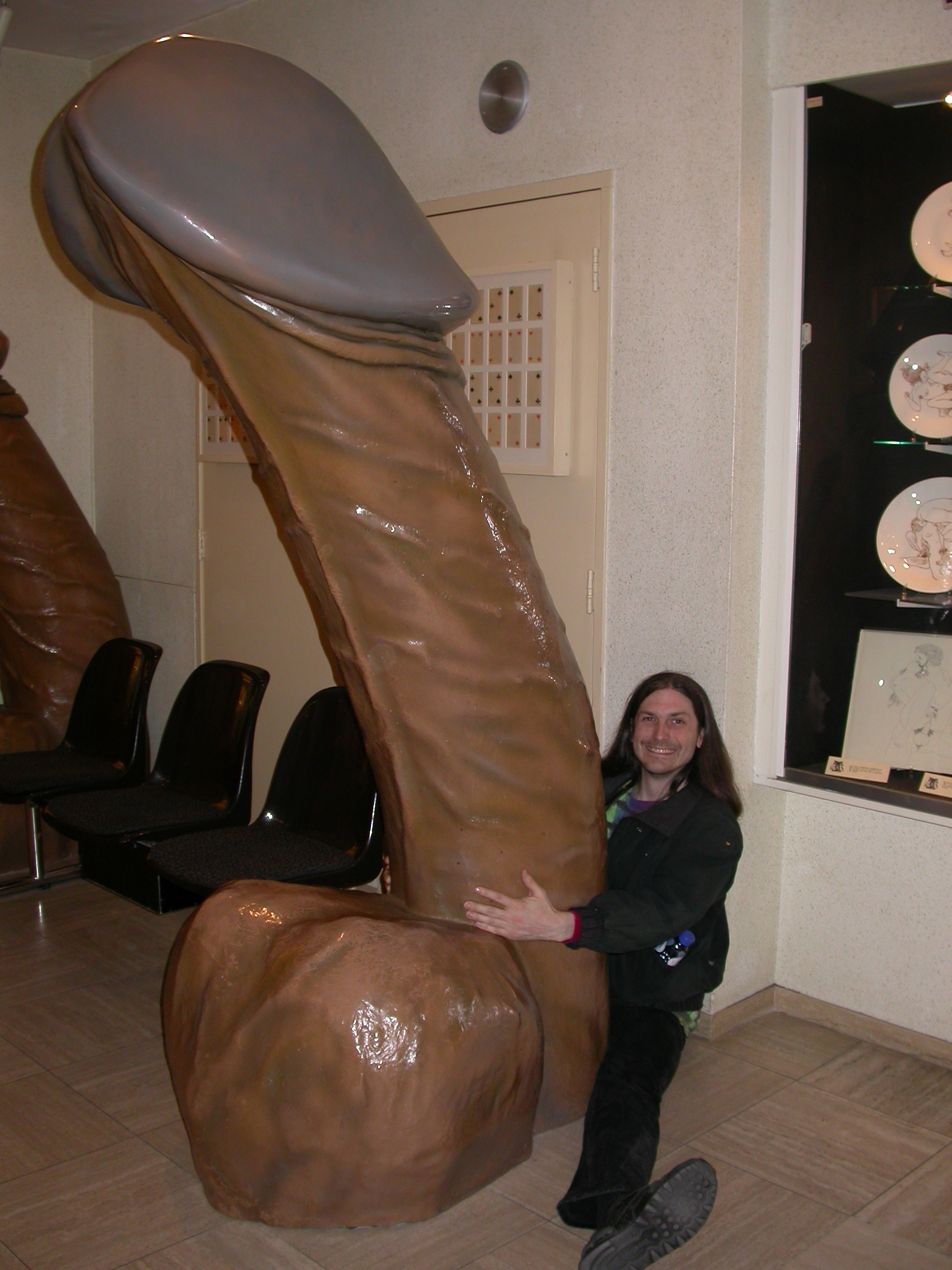
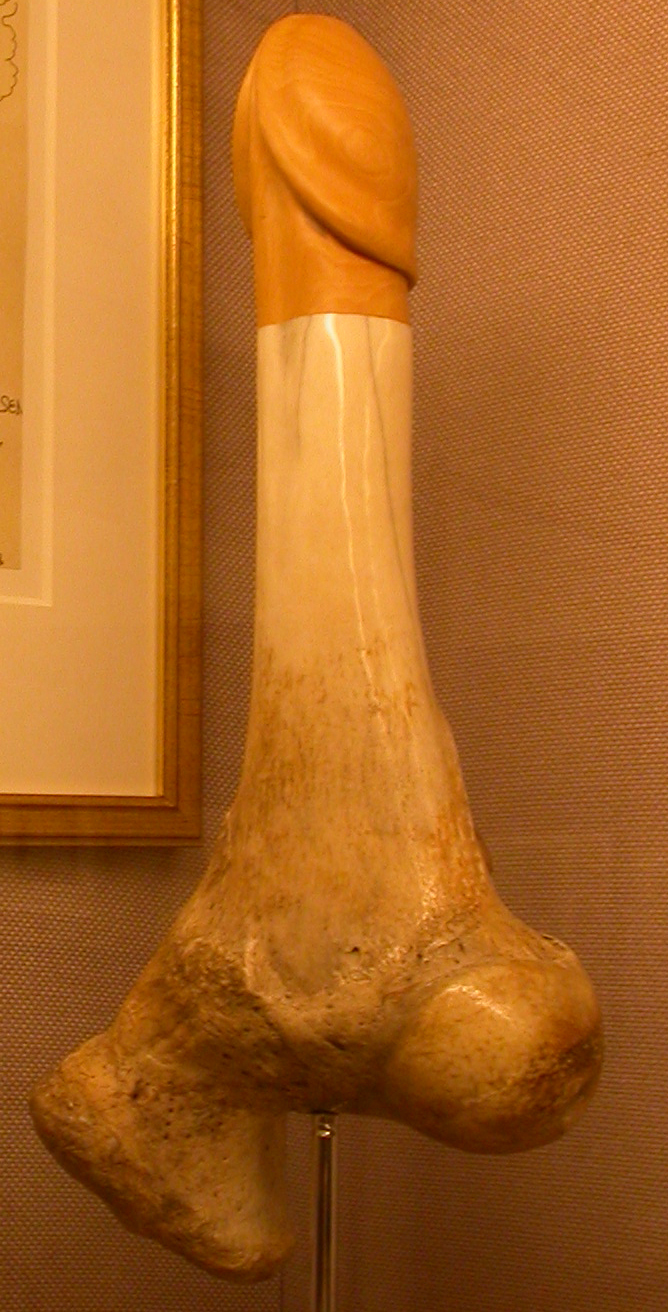
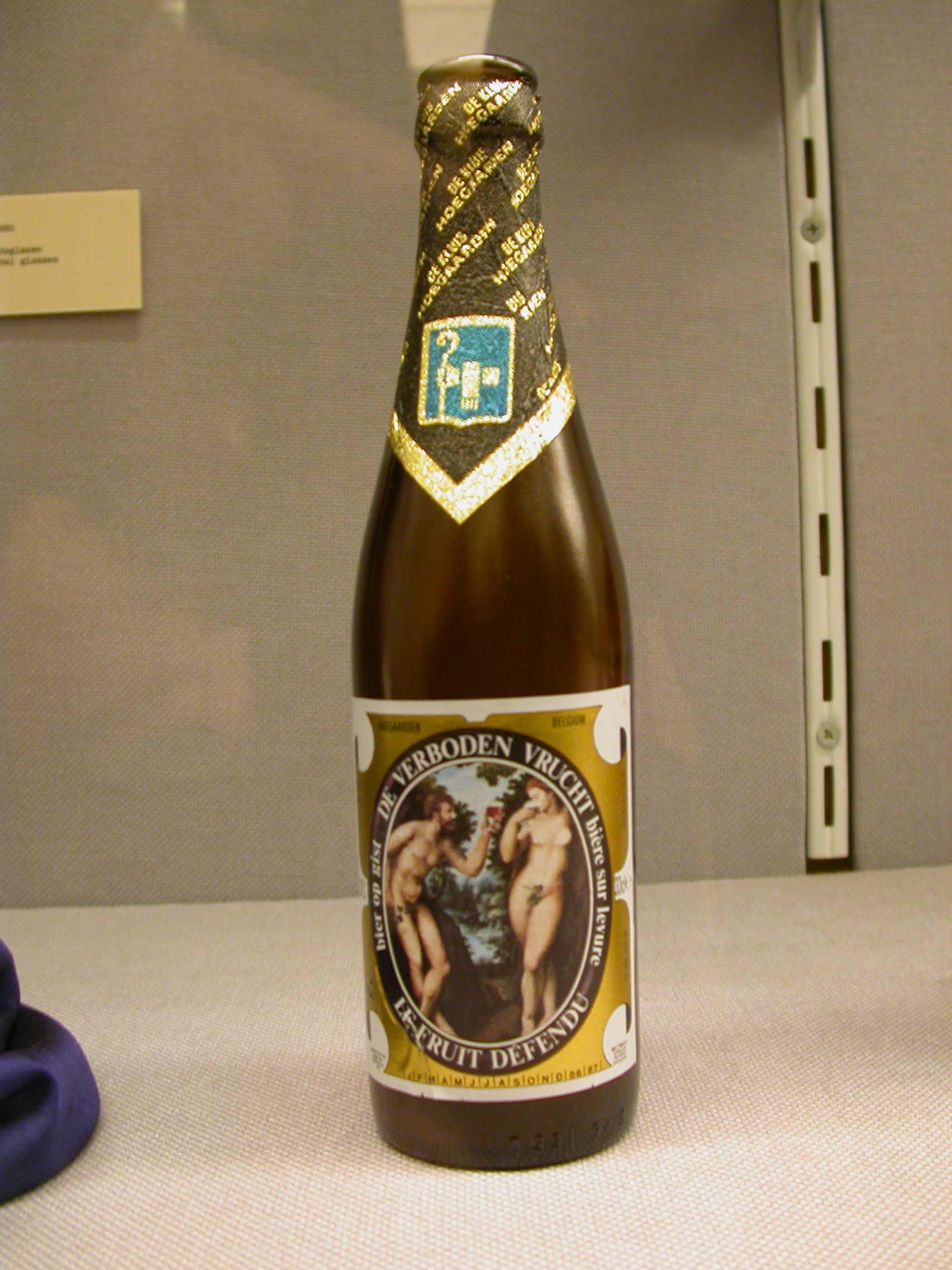
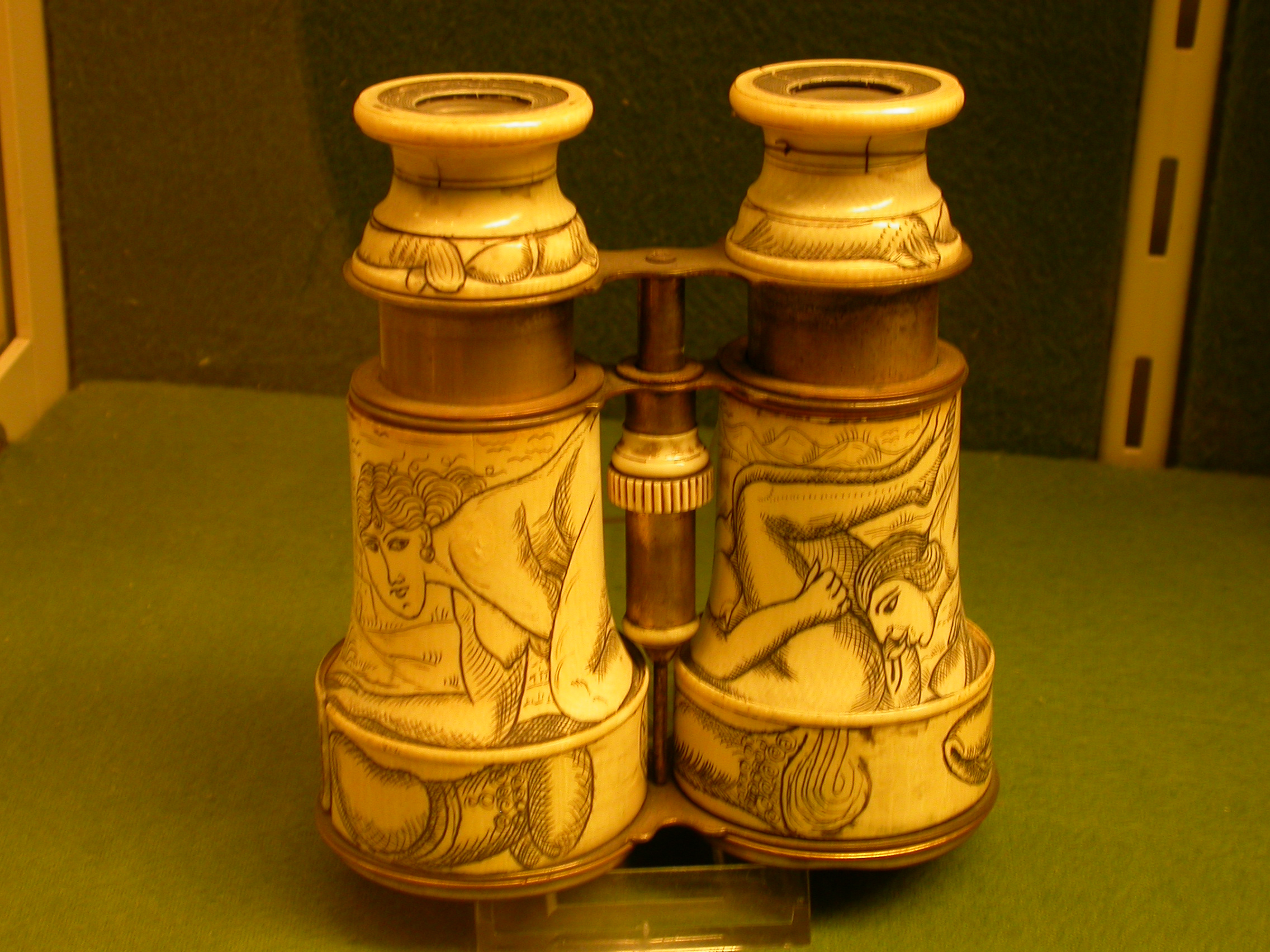
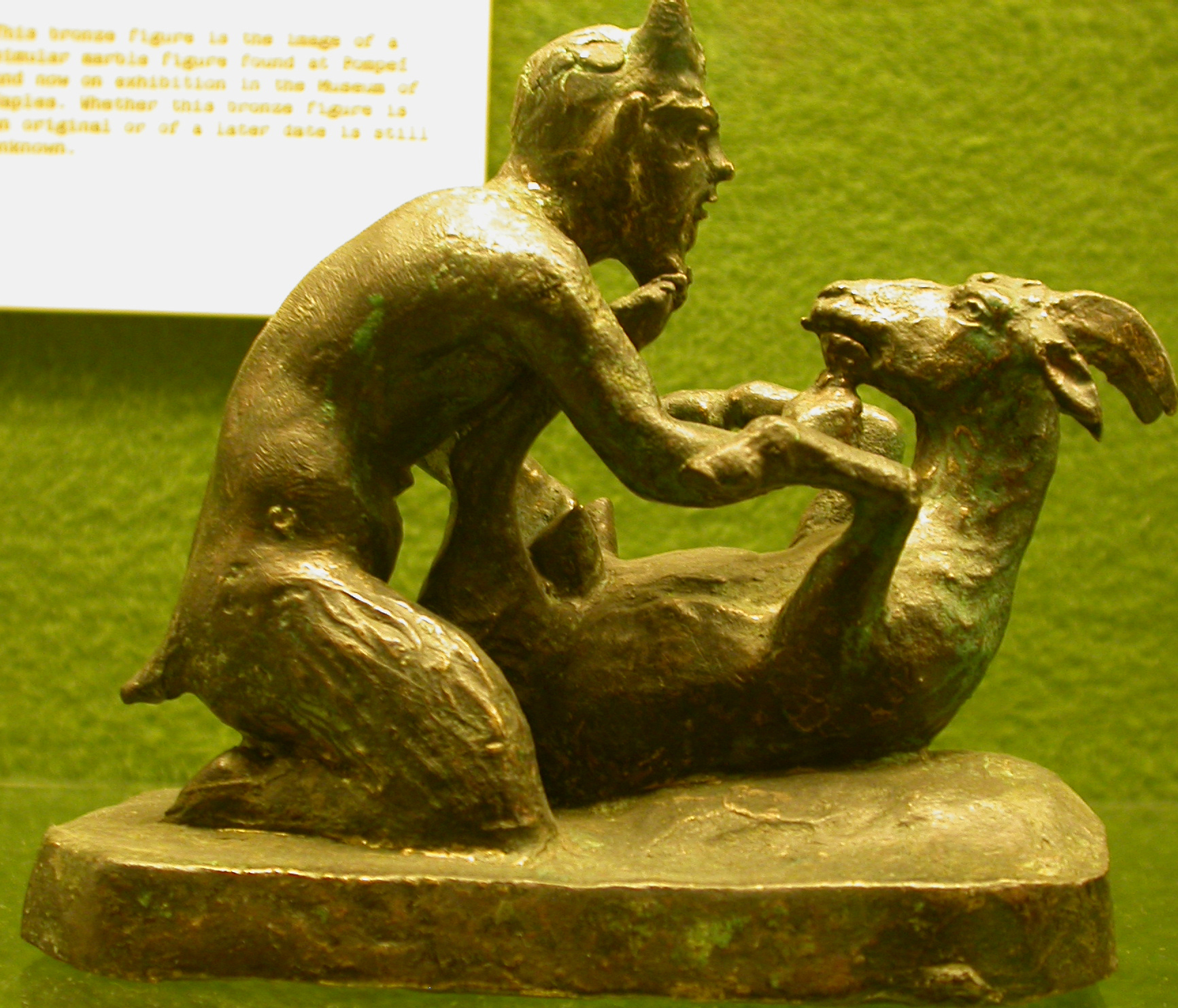
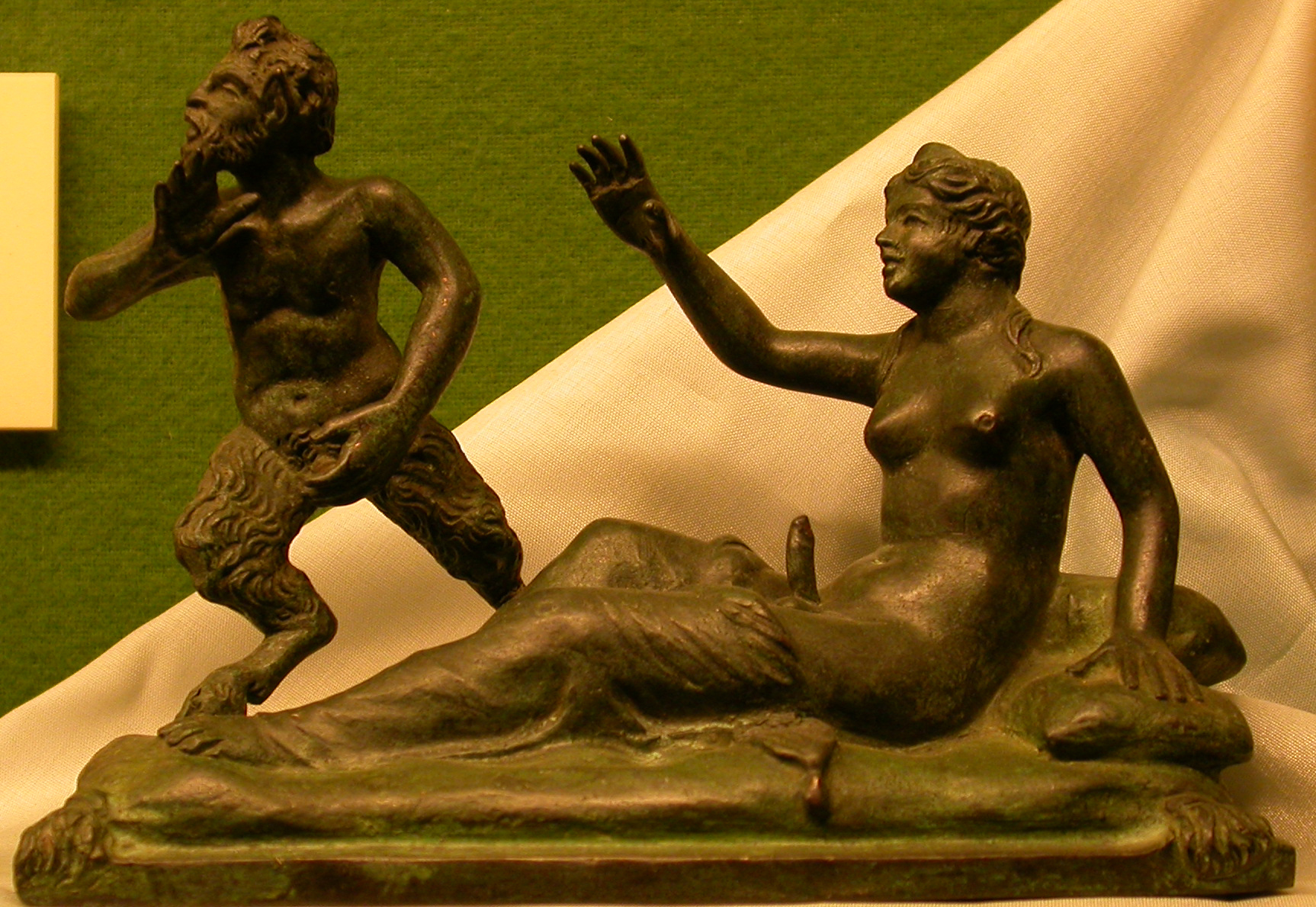
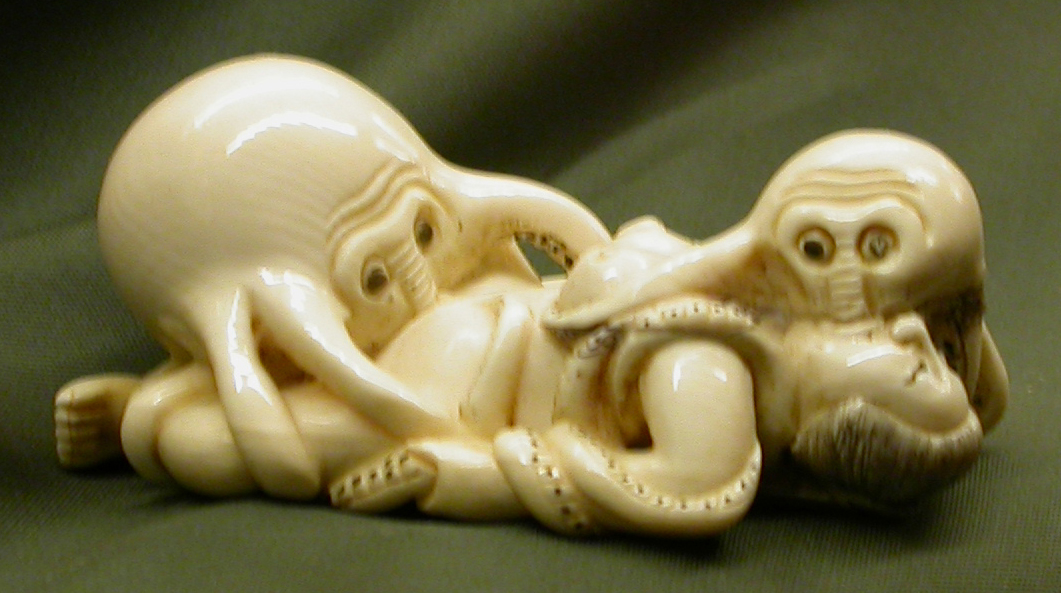
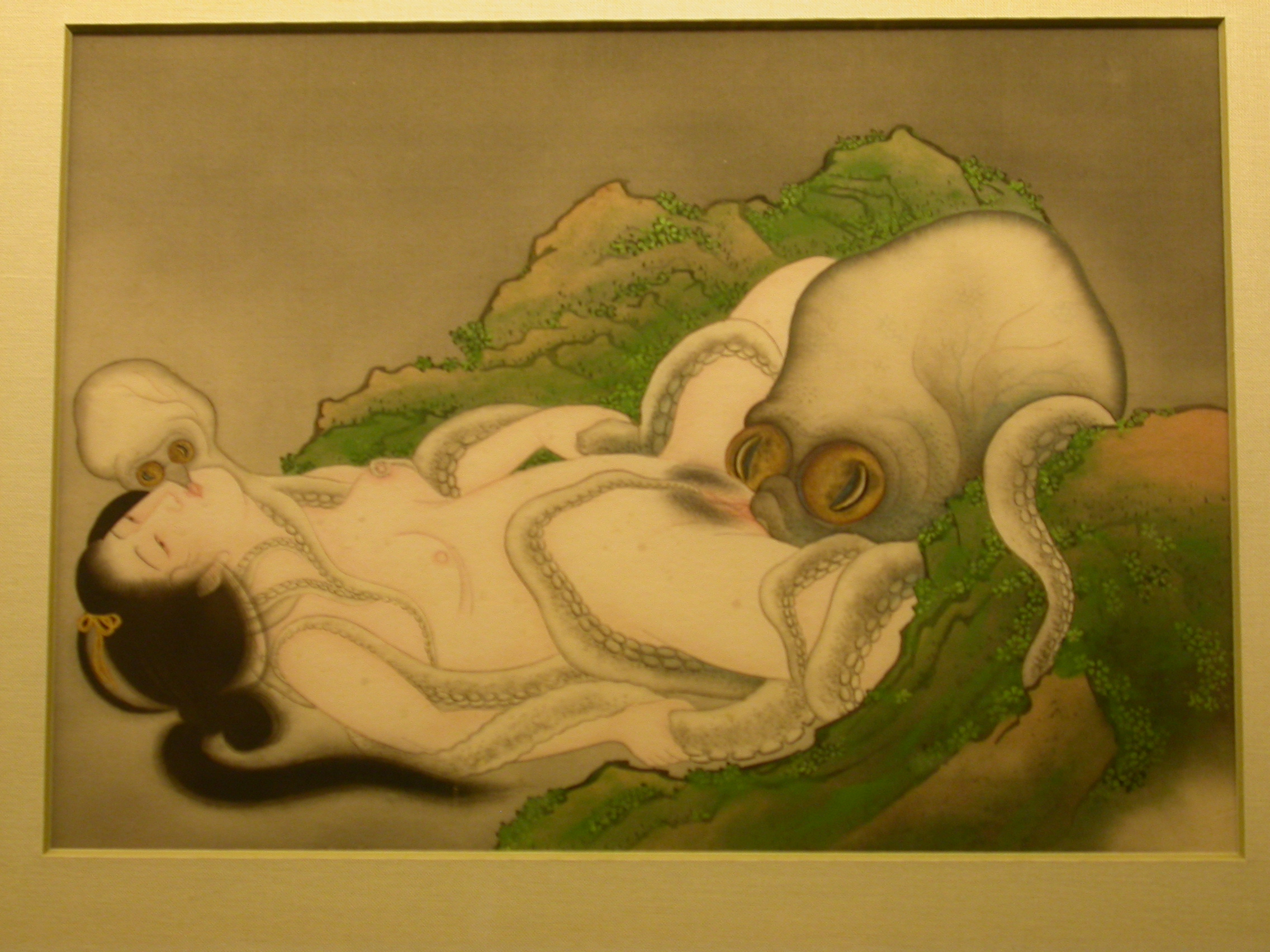
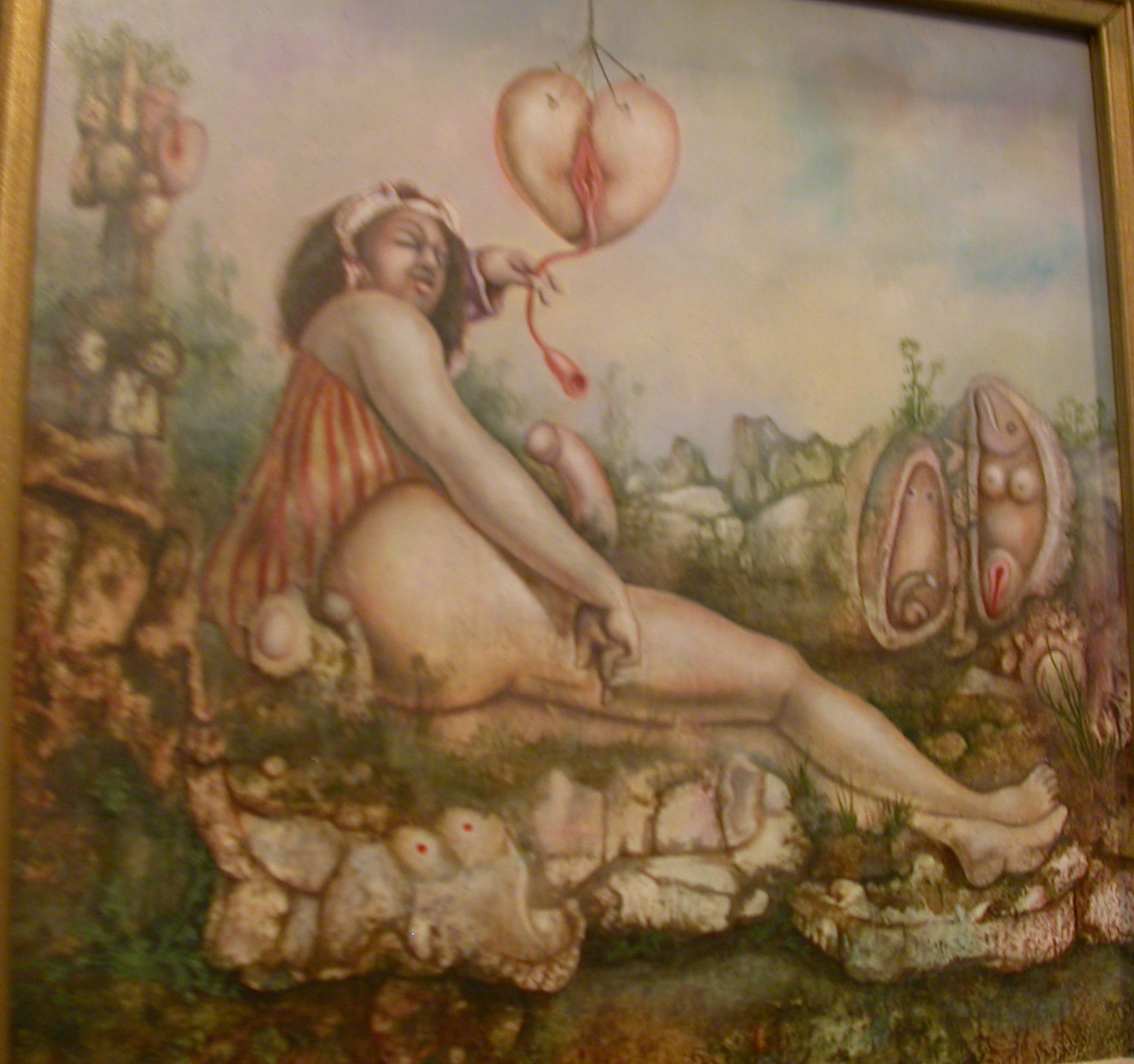

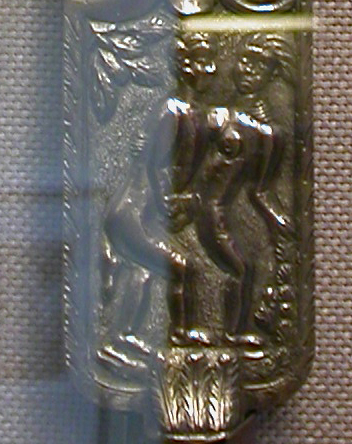
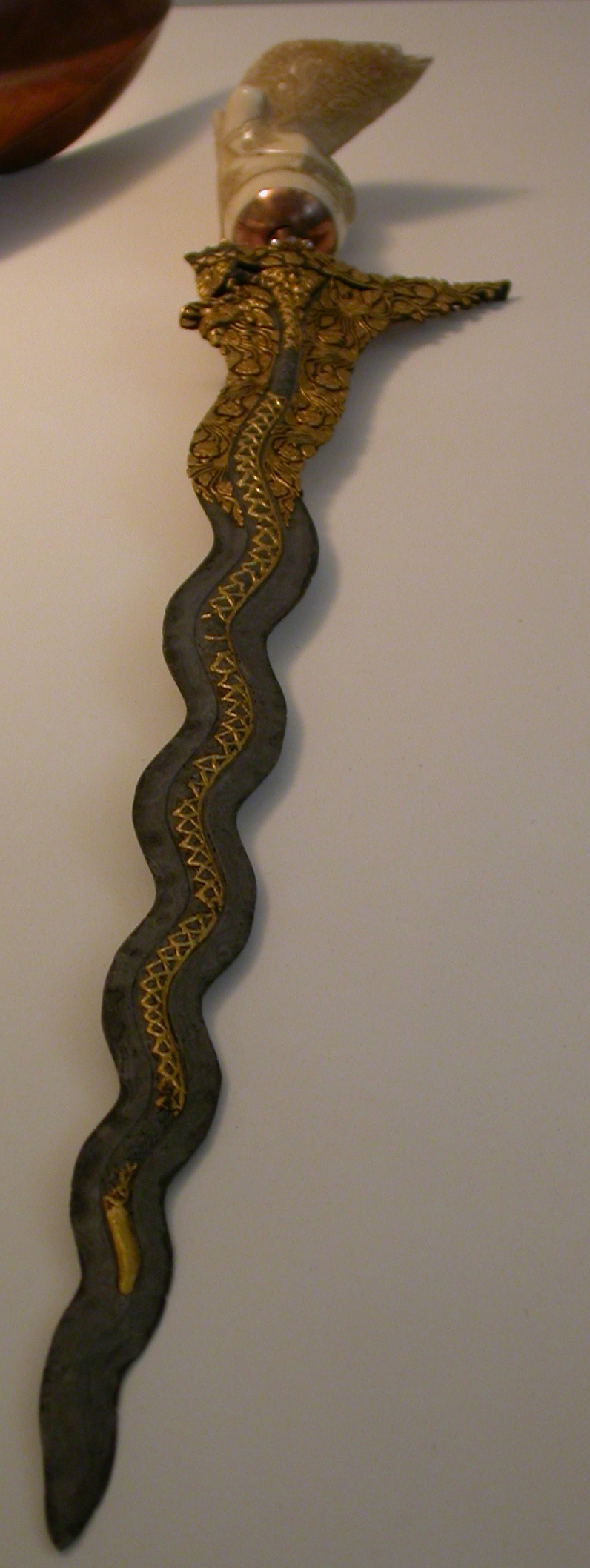
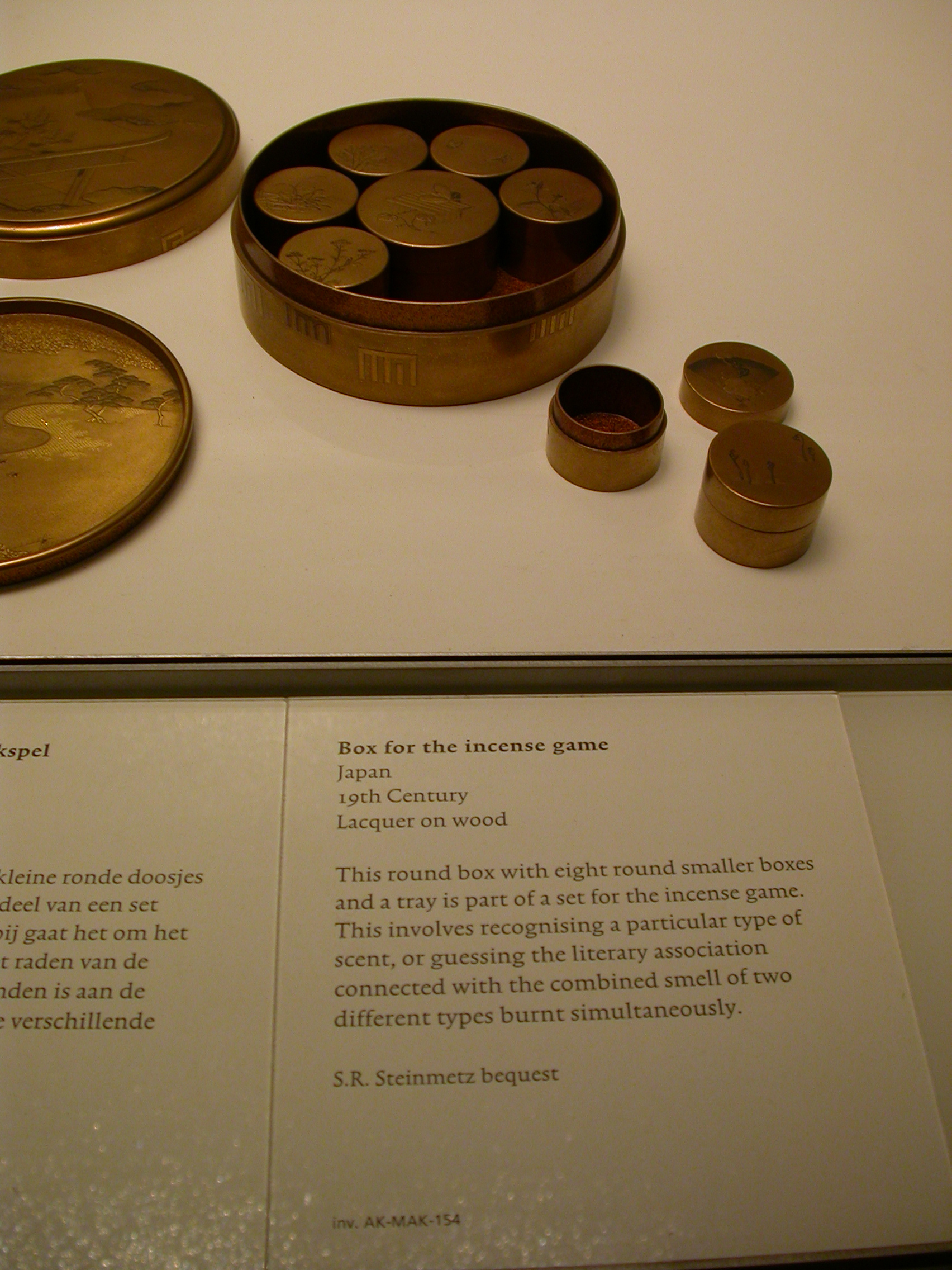
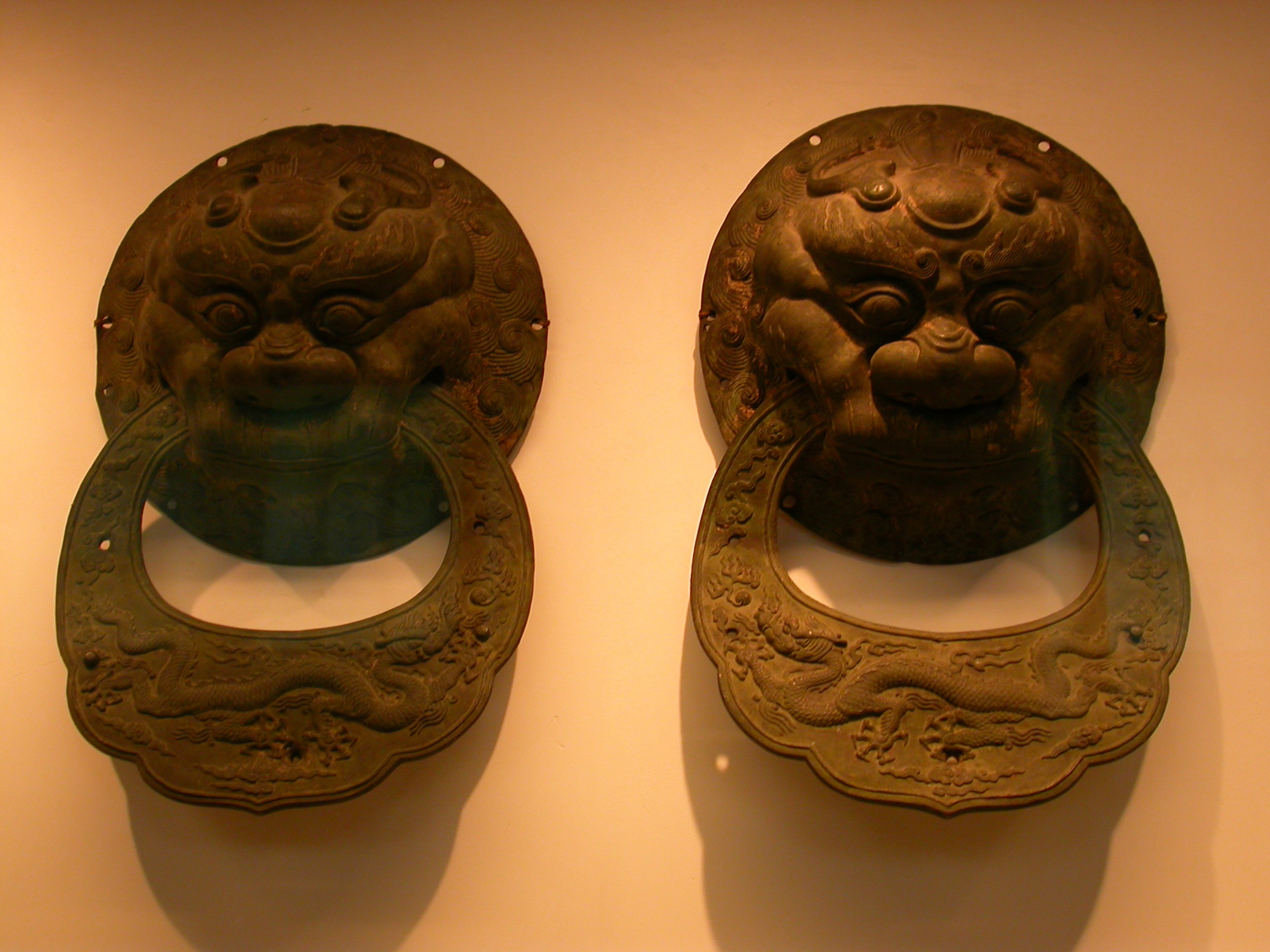

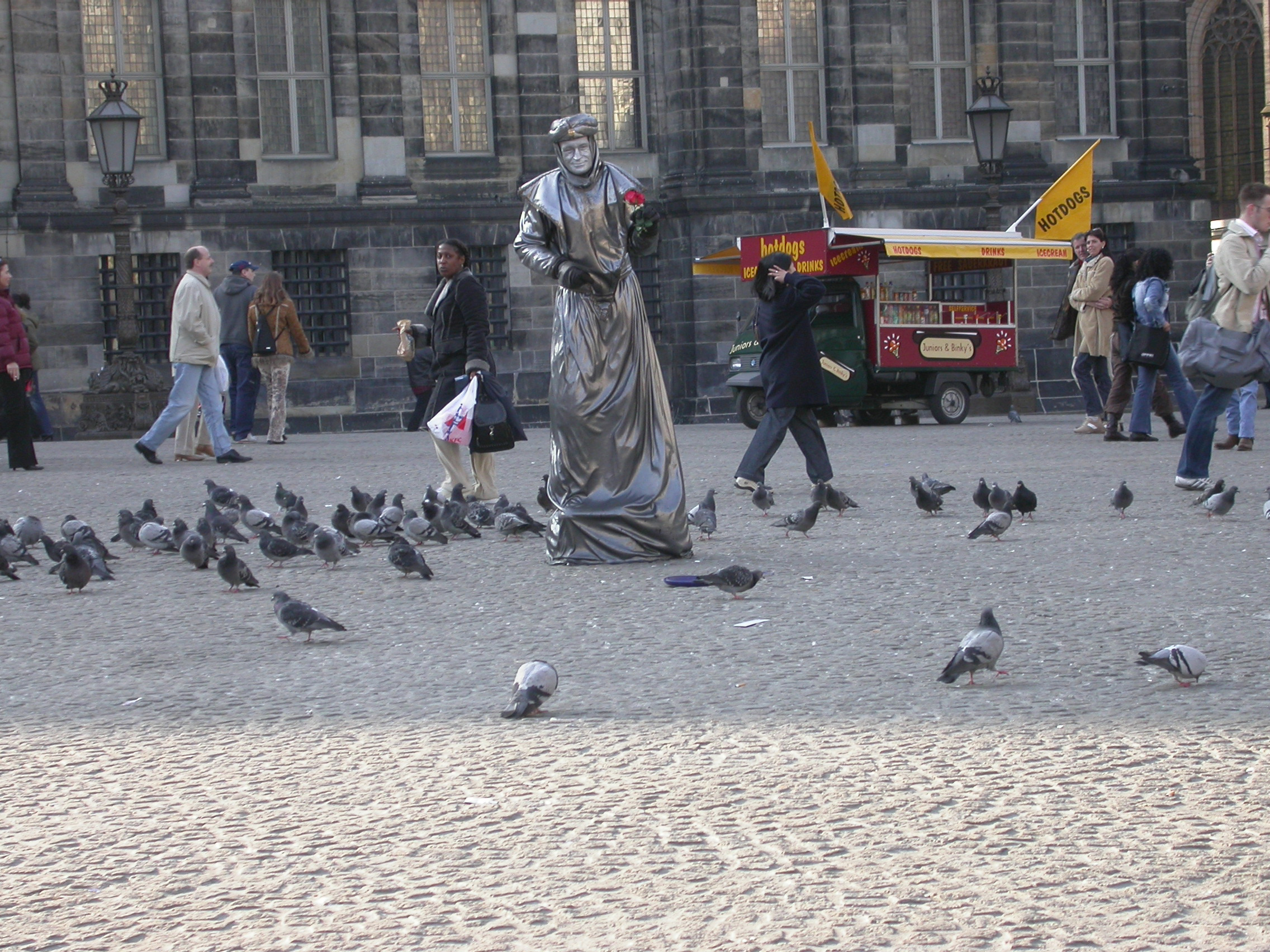
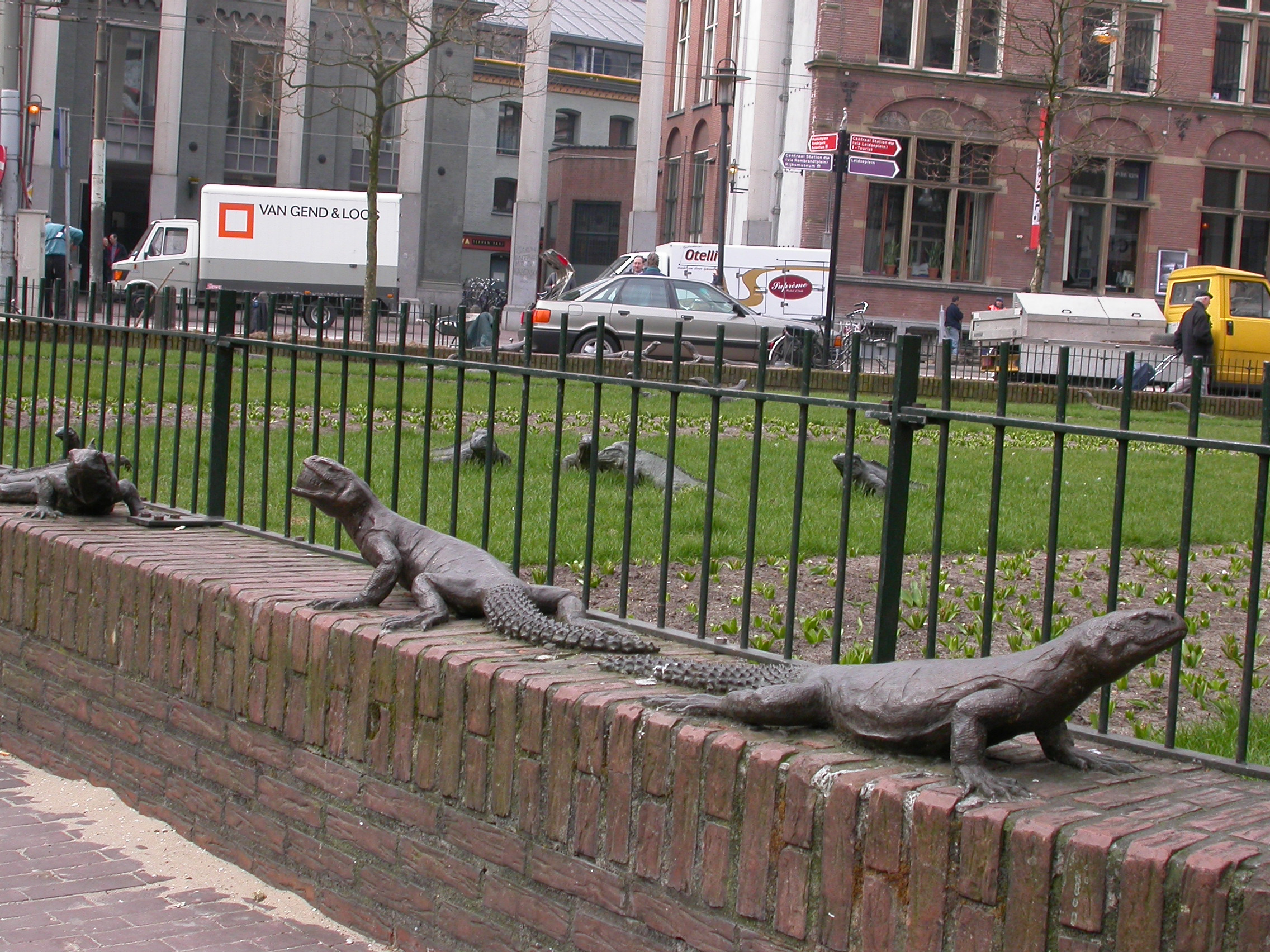

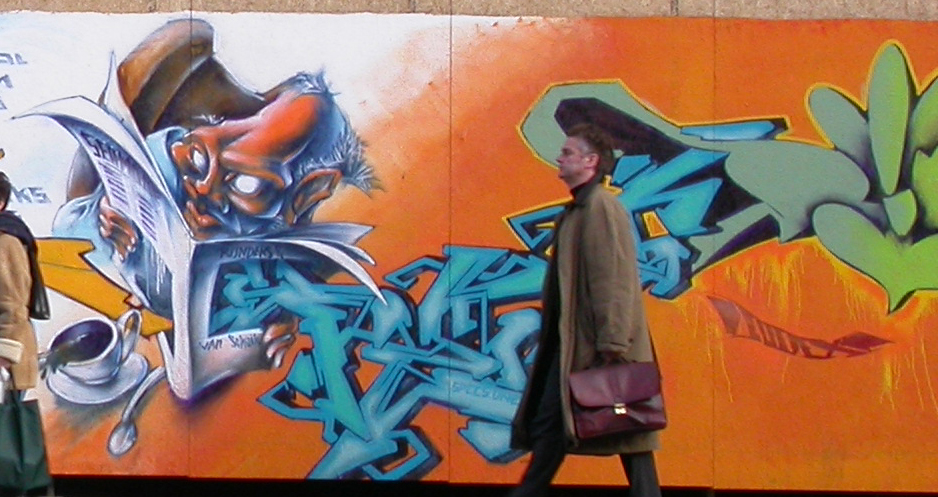
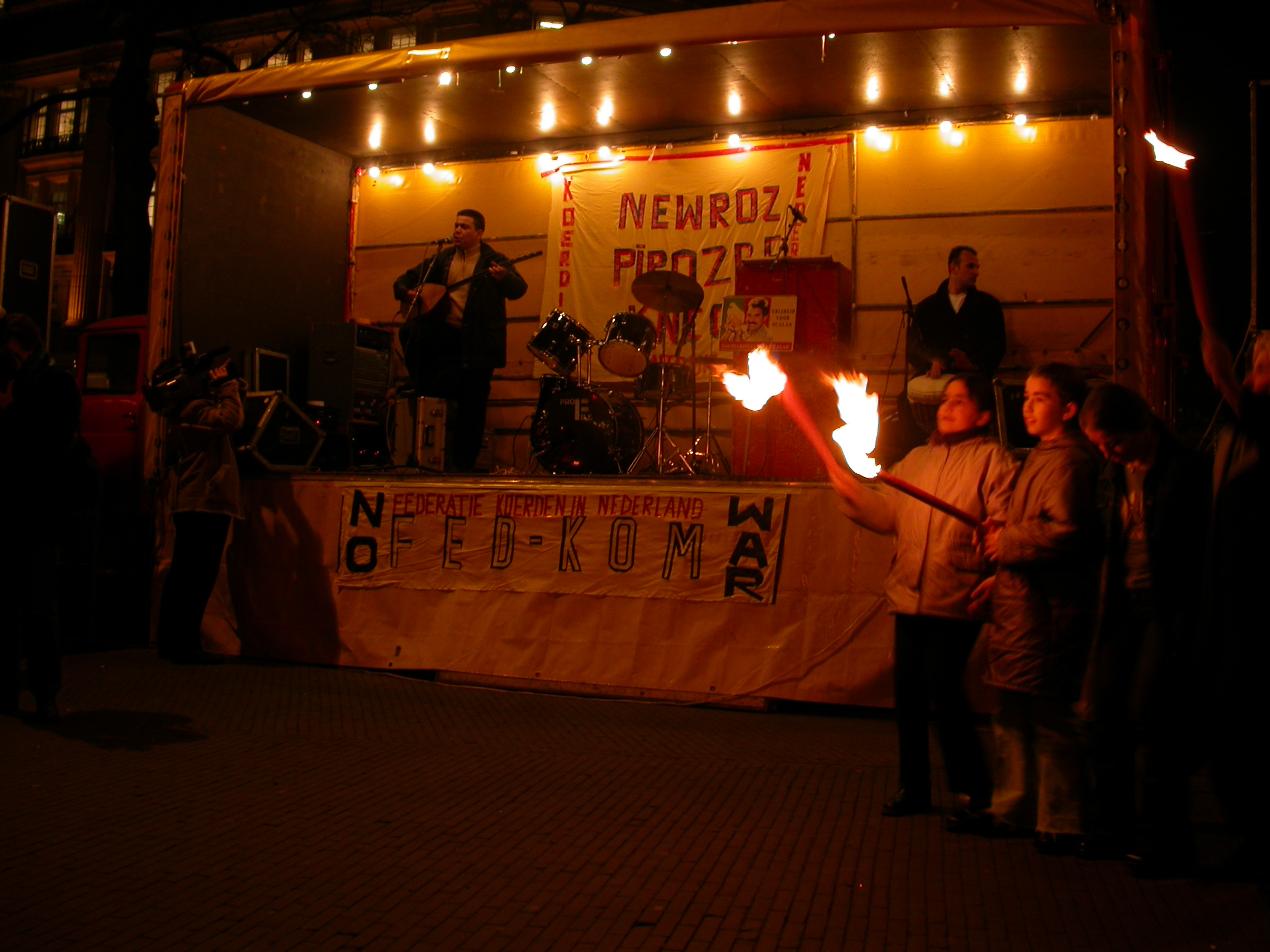
NSFW warning! This page contains pix from the Sexmuseum. What's suitable for a museum in Amsterdam may not be suitable for where you are right now.

|
We rode the tram from our hostel at Vondelpark to Central
Station. Trams run constantly in Amsterdam, or at least often enough
that you can always catch one within 5 or 10 minutes. Central station
has both trains and trams running through it. |

|
Also leaving from Central Station are the
canalboats. They are not a primary means of transportation, though,
they are mainly for the tourists. They give scenic tours of Amsterdam
through the canals. The canals are built in concentric rings within the
city. They were originally built for defense, and were expanded outward
as the city expanded until military technology made them obsolete. Then
they were used for transportation, and now boat houses are a fairly
common sight along the canal. |

|
A flock of seagulls circling over the canal. |

|
The canal system is quite extensive. |

|
Many of the houses in Amsterdam have hooks on
the top floor. This is because the houses are built in the Dutch style
(surprise!) which means that they are very tall and narrow. The
doorways and staircases are far too narrow to bring up furniture. The
furniture is brought in by hooking pulleys to the hooks and swinging it
in through the upper-story windows. |

|
If you look closely, you will see images of
animals and sometimes simple scenes on the outside of some of the
buildings. These are images from the days when literacy was uncommon,
and the image depicted the family name or trade. Detailed decorations
of no particular significance are common, too. |

|
There are a lot of clocktowers in Europe. Fortunately,
I have pictures of ALL of them. This one has an unusual top-piece in a particularly
unattractive shade of yellow. |

|
Europeans were fond of putting carvings on
every prominance they could get their hands on. This is simply a
decoration on one of the pillars of a bridge in the canal. You can't
really see it unless you're in the canal. Perhaps it is there to
inspire you if you are drowning. |

|
Despite the excellent tram system, bicycles
are really the primary means of transportation in Amsterdam. Bicycles
are everywhere. This is the bicycle parking lot at Central Station. I
cannot even begin to imagine how many bikes are parked here, but every
level appeared to be packed solid. Presumably, people ride their bike
to the station, park it, and take the train somewhere to work. The
bicycles have right of way over cars and pedestrians, and they don't
have air horns (neither do the trams, come to that). They have little
bells, and you learn to listen for their ringing, because it usually
means that a bicycle is approaching at a very high rate of speed.
|

|
Most of the bikes in Amsterdam are old and
cheap. A few are a little more interesting. This one is actually just
an ad for a coffee shop. |

|
Europe has several erotic art museums.
Amsterdam has two. The Seksmuseum is the better of the two, and
is considerably less expensive than the Museum of Erotic Art in Denmark.
Displays vary from the interesting to the crude to the simply absurd.
The bench between two giant penises gives one a place to rest on the third floor.
|

|
It also gave Eric some ideas.
|

|
Apparently, the Steely Dan wasn't the first
sex toy to hit the market. I'm not sure when this particular item was
actually constructed.
|

|
The cardinal rule of marketing: Sex sells. |

|
I don't think you could convince the nice officer that
you just use these for birdwatching. |

|
One can tell that sexual norms have changed
over time. This sculpture depicts a satyr having sex with a goat (which
may not be beastiality, come to think of it...)
|

|
...but the satyr retracts in horror when he discovers
his lover is a hermaphrodite. I suspect these things are on opposite
sides of "the line" today.
|

|
This sculpture sheds an odd light on
Lovecraft's Cthulu mythos.
|

|
Even more disturbingly, this seems to be a
common theme in Asian erotic art.
|

|
This image seems to have a theme. Then again,
the whole museum pretty much has the same theme. I thought this
painting had some merit, though. Looks sort of like something
Max Ernst would've painted as an adolescent.
|
 
|
I guess Aarron isn't the first person to have
a taste for pretty sharp things.
|

|
There are lots of regular museums in
Amsterdam, too. The biggest of these is the Rijksmuseum, which is the
national museum of the Netherlands. Although it's hard to remember
today, the Dutch used to be a world imperialist power, so they have a
lot of neat stuff that they stole from other countries, primarily
Indonesia. |

|
The Incense Game struck me as a very cool idea
with no counterpart in our culture. It certainly seems like a relic of
a slower-paced day. |

|
These door knockers were taken from Indonesia.
It really makes you wonder what they would've looked like on the door, doesn't it? |

|
Amsterdam has a lot more personality and
culture than I expected. This outdoor chess set resides in the middle
of a busy pedestrian shopping and recreation area. |

|
It's easy to mistake this mime for a statue.
The pigeons seem to be fooled. |

|
This picturesque little green space in the
middle of the city was appearently too boring for Dutch tastes, so they
decided to spruce it up with some metal lizards. I could identify some
iguanas and moniters, but I'm not sure what the others are. |

|
Eric contemplates the wisdom of a souvineer.
|

|
Please ignore the dutchman in the foreground.
This picture is about the graffiti in Amsterdam. The graffiti seems to
be making reference to the local coffeeshops. I think there was a
particularly good article in the paper.
|

|
It was comforting to see that by and large,
the world opinion leaned toward peace. We weren't surprised to see a
anti-war protest in Amsterdam, but it definitely made us feel more at
home. |